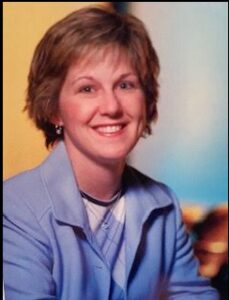What if the insurance industry’s biggest challenge could also be its biggest opportunity?
Experts said this is likely the key for insurance carriers when it comes to navigating a changing workforce.
Executive Summary
Carrier Management recently sat down with a panel of insurance industry executives assembled by ReSource Pro to discuss the biggest opportunities and challenges ahead for carriers in 2023. Panelists mentioned workforce and operational challenges such as an aging workforce, the hybrid working environment and industry modernization, but also shared how they believe these are also the industry’s biggest opportunities.“The changing workforce is a challenge, and I think it’s also one of the biggest opportunities because we’re bringing all of this new talent into the insurance industry and really getting folks that don’t have any idea of what insurance is,” said Vanessa Parker, vice president of operational excellence and specialty service delivery at CNA.
One benefit for carriers is the opportunity to harness creative ideas from professionals that come from a range of backgrounds and skillsets, she said.
“I think it’s a big opportunity to really harness the ideas of those front-line associates who get in front of our customers more and talk about creative ways to solve for challenges,” she said.
Parker was speaking on a panel discussion held and assembled by ReSource Pro about the biggest challenges and opportunities carriers will likely face in 2023. Over the course of an hour, five insurance executives spoke exclusively with Carrier Management about workforce and operational challenges for carriers and the best ways to attract and retain talent in the coming year.

The hiring opportunities Parker sees in the industry, however, also come on the back of challenges carriers have been grappling with for years regarding an aging workforce. This is something Pie Insurance Co-Founder and President Dax Craig said he expects to continue into next year.
“I think part and parcel to that is related to difficulty attracting tech talent, typically software engineers or data science people,” he said.
This hiring challenge isn’t only due to an aging workforce, either, according to Greg Gaydos, head of underwriting support for E&S at MunichRe. He also pointed to changes in how employees are thinking about work across the board.
“People are changing what they want out of life and potentially how to achieve it,” he said. “And so I think for us, for the industry, we need to be more creative in how we manage that skill gap.”
‘Hiring for Potential, Not Experience’
For Audrey Testerman, head of operations at Ascot, all of this means that carriers’ hiring philosophies will need to change.
“It depends on the role, but in some of the more junior or entry-level support roles, I really changed my philosophy in that I’m really hiring for potential, not experience,” she said.
She shared recent examples of employees who joined Ascot with teaching degrees having decided that, after a year of teaching, they wanted to try something new.

“If they’ve got some of that experience and expertise, and if they’ve got some of that other skillset, we’re able to train them more from the ground up,” she said.
Gaydos added that while he agrees with that approach, one big challenge for carriers with training employees from the ground up will be modernizing onboarding programs so they’re efficient and easily understood in an industry full of legacy systems and processes.
“The training programs and the onboarding programs have to be pretty slick for the people that we’re bringing into the organizations in order for them to respond to them,” he said. “That’s a big piece in my mind that we’re potentially, as an industry, lagging.”
Testerman agreed.
“I look at some of our systems and processes, and I think a lot of generations that we’re starting to train and onboard are used to things being very easy and very quick and very different in the way in which they learn,” she said. “So, I think figuring out ways to have that resonate, especially for people that are new into the industry, is critical.”
Parker said for new employees to the industry who don’t come from an insurance background, she believes carriers should develop individualized, interactive training tools or even virtual mentorship programs to help employees stay connected.

“There are lots of different things we can do, but there is definitely a lot of work ahead of us to make sure that our folks stay connected and feel like they’re part of a team,” she said.
Craig added that doing this work can start with something as simple as a mindset shift for the top-level executives in an insurance company.
“I think culture is what drives talented individuals, and part of culture is creating a mindset shift from ‘this is just the way it’s done,’ which I know is present in a lot of carriers, to ‘how should the work get done?’ and using first principles to figure out how employees should get work done and then automating those areas where bottlenecks exist,” he said. “It’s sort of a bottoms-up approach, rather than a top-down approach. That to me is a huge opportunity that actually is not that hard to implement. It’s just a mindset shift from top management.”
Remote vs. In-Person Work: An Uphill Battle
Beyond modernizing training tools and the onboarding process, Gaydos sees another short-term hurdle as more talent without an insurance background joins the industry.
“How do you fill that short-term gap as you bring people through? How do you still process business? How do we continue to underwrite business? How do we settle claims…while we’re ramping people up?” he said. “That, in my mind, is the short-term question. I think longer term, we all will have an idea on how to fix this or at least some ideas on how to fix it. I think it’s going to be the shorter-term impact that we’re going to feel until we get there.”
This is where not only attraction but employee retention comes into play, panelists agreed. Craig sees this as an uphill battle, particularly since the pandemic switch to remote work.
“I think remote versus in-person work is going to be challenging,” he said.
Testerman shared her own experience of recently hiring two operations and underwriting support professionals who were being required to return to the office with a tough commute at their former companies.
“I think, depending on the individual, people have gotten very comfortable and they feel like they can’t even afford to lose two hours of their day with their volume of work,” she said. “I think companies are just going to have to figure out what roles have to be in the office and more forward-facing and in-person, and where they can afford to have that flexibility and more remote ability. That will allow us to hire for talent, but also have employees who don’t think they’ve lost some of that balance.”
In fact, Gaydos said Testerman’s experience with recruiting employees who are seeking more flexibility is occurring more and more in the industry.

“As far as being able to recruit people because they’ve been required to come into the office, there are a number of head hunters that actually use that strategy to target organizations when they hear that they’re forcing employees to come back to the office on a more frequent basis,” he said. “And they’ve been very successful by using those tools.”
Gaydos shared his company’s own experience of striking the right work-life balance after the COVID-19 shutdowns lifted. He said some of MunichRe Specialty Insurance’s recently hired employees had not worked in the office for the majority of their time at the company.
“For our organization, MRSI, we built and opened up our Philadelphia office basically the month before the pandemic hit, so we have underwriters and servicing employees that, for the greatest portion of their life with us, never set foot in the office,” he said. “And now we’re asking them to come back in more regularly. I think we also have to look at alternate ways of delivering the experience, creating those training sessions, creating those opportunities to learn the business more robustly, through other means.”
He said that the company is working through this by discussing how to collect and document the expertise of senior-level employees in the business and share that through virtual training systems in addition to in-office programs.
“I think we often look at this as an in-office versus a virtual conversation,” said Steve Discher, senior partner in the carrier practice for The Nolan Company at ReSource Pro, but he said he sees both in-office and virtual being able to co-exist.
“Retention has been a big issue, and so, therefore, we’ve moved to a more flexible work environment,” he said.
He added that it’s about striking the right balance with the use of technology so that employees can do their jobs more efficiently without losing the personal touch that is a part of their work culture.
“I think more and more clients are thinking about the employee experience and the importance of simplifying the technology environment and making it an easier place for employees to work so that they can spend time working on the decisions or the value-adding parts of their job,” he said.
Although a flexible work environment can be good for retention, Discher cautioned that challenges do exist when trying to retain employees even with remote work.
“I think as a result, culture and the development of people is becoming a real challenge when you’re operating in a virtual environment,” he said. “How do we solve for that when we are used to being able to peek over the edge of the cubicle and talk to a more senior person or get input? Today, we don’t have some of that benefit of being able to be face-to-face.”
Creating a Culture That Resonates
However, Craig said that regardless of changing work culture with shifts between remote and in-office work, he believes the best way to bring new employees—especially younger generations—through the door and retain them is by remaining consistent in educating about the insurance industry.
“I think culture is what’s going to change, not how people view the insurance industry. What we do is for the common good, and we don’t talk about that enough,” he said. “We don’t talk about the good that these companies do and how we repair people’s lives and help them come back from accidents or whatever may happen to them. It’s really important to talk about the mission of insurance companies because it resonates with people that are younger, and they want to be mission-driven, and that needs to permeate the culture. It’s about the customer; it’s not about the money.”
Despite any challenges on the horizon, Parker said she remains optimistic for the insurance workforce of the future.
“We all know that change is needed and required to get us to the future state that we all want to be in,” she said. “It’s an industry that’s ripe for change, and I think that’s exciting.”





















 Legal Finance and Insurance: From Confusion to Collaboration
Legal Finance and Insurance: From Confusion to Collaboration  A Practical Blueprint: The Five Plays of an Innovation Culture
A Practical Blueprint: The Five Plays of an Innovation Culture  Aon Adds to List of Brokers Suing Howden US for Alleged Poaching, Theft
Aon Adds to List of Brokers Suing Howden US for Alleged Poaching, Theft  What to Expect in 2026: U.S. P/C Results More Like 2024
What to Expect in 2026: U.S. P/C Results More Like 2024 





